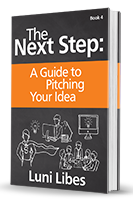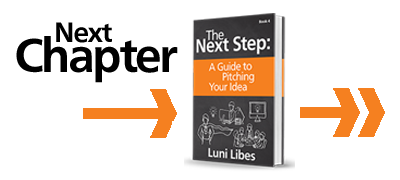The pitch does not end until the Q&A sings.
MOST PITCHES INCLUDE an opportunity for the audience to ask questions. If that is not made explicit, ensure your pitch is short enough to include time for questions. For example, if you have a thirty-minute appointment with an investor, plan on pitching for only fifteen to twenty minutes. If you have an hour appointment, plan on pitching for no more than twenty to twenty-five minutes, leaving most of the time for questions.
RULE 36:
The pitch is not over on the last slide, but rather after the Q&A.
This “Q&A” portion of the meetings is just as important as the prepared slides, and you should practice answering questions just as much as you practice the structured pitch.
RULE 37:
Practice your Q&A.
Have someone on your team write down every question asked in a Q&A session, and write down as much of your answers as possible. For the most important questions, create slides with those answers, and put those slides in the “appendix” of your slide show, after the “Thank You” slide (see the next chapter).
RULE 38:
Write down every question asked.
You have (likely) been thinking about the problem and solution for months longer than anyone in the audience. Try putting yourself in the shoes of the audience. As best you can, think back to when you knew far less about your target market. What questions did you have before deciding to enter that market? Have you answered those questions in your presentation?
RULE 39:
Ensure the presentation answers the obvious questions.
Every plan has risks. There is the risk that your solution won’t truly solve the problem. There are risks that customers won’t find value in your solution. There are risks… upon risks… upon risks that all lead to failure.
RULE 40:
Make sure to address the risks of your plan.
What could go wrong in your plan? What stated or unstated assumptions might be wrong? How might your competitors adapt to your launch and eliminate your window of opportunity?
Leading Questions
If your presentation is limited to a short amount of time (e.g., five or ten minutes), and if you know there will be Q&A after your allotted time, consider moving some of the details from the presentation into the Q&A period. This can be accomplished by telling the audience that more detail is available, or, more subtlety, by simply leaving out an otherwise important part of the presentation, such as discussion of the competition. Do not leave out the problem or solution or ask, but when pressed for time, details on the competition, financials, and team can be trimmed or even skipped.
RULE 41:
If pressed for time, skip or shrink a section, and provide that information in the allotted Q&A.
To be clear, I am not advocating that any of the topics be skipped completely, but instead, if you know there will be Q&A, save some slides for that portion of the pitch.
The “Top” of Your Knowledge
When answering questions, answer to the “top” of your knowledge. That is, go ahead and use whatever knowledge you have to answer the question, but do not go above and beyond your own knowledge. Do not guess. Do not make up an answer. And certainly do not lie.
By keeping to the top of your knowledge, you minimize the risk of anyone in the room knowing the right answer and calling you out for stretching the truth.
By answering every question confidently, using facts, experiences, and anecdotes, you will come across as more of a credible expert. Remember, you are the world-renowned expert on your own plans. The audience begins with that expectation and will give you the benefit of the doubt on your facts until you say or do something to lose that credibility.













